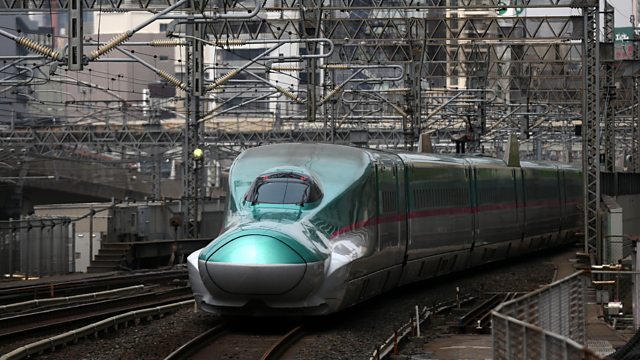The high-speed train race
Celebrating six decades of very fast railways.
The first public run of the Japanese ‘bullet train’, the Shinkansen, on the 1st of October 1964, captured public imagination worldwide. And it wasn’t just the train’s sleek look or its high speed that made the headlines. Behind the train’s futuristic exterior lay a whole host of engineering innovations: new pantographs, automatic signalling, revolutionary drive units. Since then, very fast train travel has become available in over a dozen other countries. Places such as China and Spain have overtaken Japan when it comes to top train speed or the extent of the high-speed network. But the recent rise in remote working has reduced the demand for business rail travel and commuting. So what does the future hold for high-speed rail?
Iszi Lawrence talks about the origins of high-speed rail and its current state to historian of modern Japan, Prof. Jessamyn Abel from Penn State university, civil engineering professor Amparo Moyano from the University of Castilla-La Mancha, Consultant Editor of the Railway Gazette Murray Hughes, poet Jan Ducheyne and World Service listeners.
(Photo: A Shinkansen train arrives at a Tokyo station. Credit: Carl Court/Getty Images)
Last on
More episodes
Previous
Featured
-
.
Broadcasts
- Sat 28 Sep 2024 11:06GMT91�ȱ� World Service except East and Southern Africa & West and Central Africa
- Sun 29 Sep 2024 02:06GMT91�ȱ� World Service
- Sun 29 Sep 2024 13:06GMT91�ȱ� World Service East and Southern Africa & West and Central Africa only
- Sun 29 Sep 2024 16:06GMT91�ȱ� World Service News Internet
- Wed 2 Oct 2024 09:06GMT91�ȱ� World Service
- Wed 2 Oct 2024 23:06GMT91�ȱ� World Service
Podcast
-
![]()
The Forum
The programme that explains the present by exploring the past


